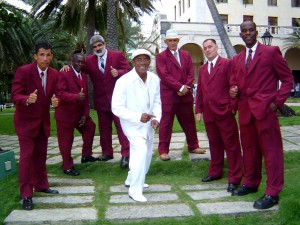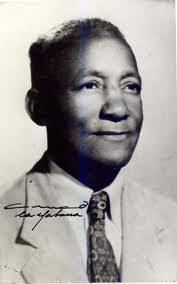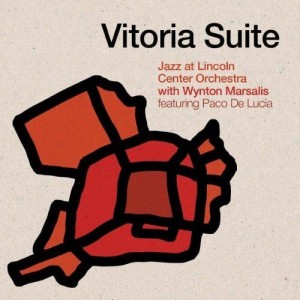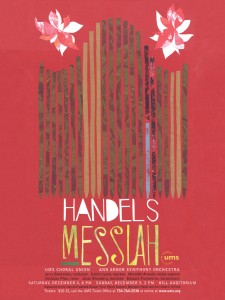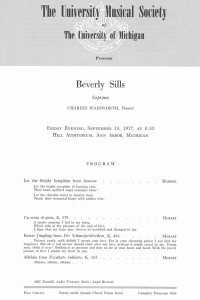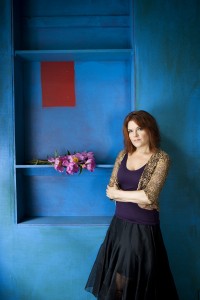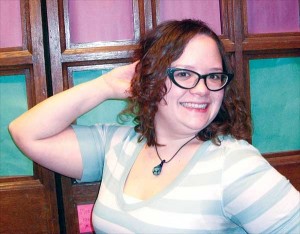[LISTENING GUIDE] Flamenco is a Living Art: Your Guide
 On November 5th UMS will be presenting Diego el Cigala: one of today’s most exciting flamenco singers and musicians.
On November 5th UMS will be presenting Diego el Cigala: one of today’s most exciting flamenco singers and musicians.
I’m Joseph Pratt. For 20 years I’ve performed flamenco and classical guitar at the Amadeus Restaurant in Ann Arbor and I’m delighted to be your guide to this extraordinary music. Though I grew up in Maine and was first introduced to flamenco through television and recordings—my initial exposure was on an episode of Captain Kangaroo–the music left a lasting impression.
Flamenco is a living art form with enigmatic antecedents. This means that while it has roots with Gypsies and other ethnic groups from Andalusia, the area of southern Spain that abuts the Mediterranean, the palette of flamenco has been enriched by hundreds of musicians and dancers from many ethnic origins. This distinctive music has been the soundtrack for the complex and often violent history of the Andalusian underclass. Also, this compelling art form will sound to the listener as though two different times or eras were superimposed: a rich cultural past inspiring a dynamic, fast changing present. Flamenco musicians have learned from the traditions of their cultural past and use those rhythms and voices in their outreach to other musical forms. Where and with whom did this all start?
During the years Spain gorged itself on Aztec gold, an underclass of Arabs, Jews, Roma, North Africans and South Americans poured into the ghettos of Seville bringing with them each their own musical heritage. Not invited to partake of their host country’s riches, the oppressed sang and danced their sorrow in the same spirit as African slaves in the New World. There was a strong current of fatalism in the people who made this music. They generally had no political recourse and were limited in the choices they could make about their own lives. Sorrow, anger, and frustration came out through the music of flamenco: a collective autobiography of hated despots, hopeful lovers, broken men, and distressed women. All the while flamenco incorporates beautiful costumes and cunning virtuosos in it’s juxtaposition of good and evil, just and outlaw which makes flamenco a compelling dynamic experience—one that never fails to raise hairs on the back of my neck.
In many ways then, flamenco was a ‘world music’ before critics coined that term for sounds that bridge form and culture. In recent years Diego el Cigala, an artist originally born in Madrid has added more twists.
Diego el Cigala is particularly good at interpreting what is known as the ‘solea:’ a form of song that expresses the feelings of deep spiritual hardship and is thought to derive from Romani songs carried over generations, from the Indian subcontinent. In a New York Times interview El Cigala says: “Flamenco has to be suffered” and this is very much the tradition of the solea song form. This is not called as ‘cante jundo’ or ‘deep song’ for nothing! While listening, notice his raspy style of singing which is a characteristic flamenco vocal sound known as the ‘voz afilla’. Some would say that voz afilla is the sound of the ripping and tearing of the soul of the singer.
Did you notice how he occasionally claps his hands? Flamenco is a music very rich with rhythm and it has a unique system of accents and beats that can sound unusual to ears conditioned to hearing the music typically played in North America.
Listen to this next video of a song called Flamenco por Lorca . This type of song is called a ‘bulerias’ and is rhythmically similar to the solea but is played at a greater tempo. Take in the floating aural sensation of the flamenco beat. The percussion instrument that that looks like a box is called a ‘ cajon’ which is Peruvian in origin. It was discovered by the great flamenco guitarist Paco de Lucia in the 1970s when he was given a cajon as a gift while on tour in Peru. Paco de Lucia is hailed to be the greatest living flamenco guitarist and has given several UMS sponsored concerts. He liked the sound of the percussion instrument so much that he incorporated it into his own music. The appreciation of the cajon caught on and is now part of the sound of contemporary flamenco. Notice, also, that many hands clap out rhythms called ‘palmas’ and additionally notice the percussive effects played out on the guitar.
Now to Diego el Cigala’s new contribution to the fusion of flamenco where he explores tango. In this video, El Cigala applies voz afilla to the chords and beat of Argentinian tango. While the sound is beautiful to listen to, purists would find this selection not to be authentically Andalusian. Still, its spirit maintains a heat and passion for the flamenco singer to identify in his soul.
Currents of time and history will decide if the tango form will become intertwined with the genre of flamenco. In that spirit, the November 5 performance, which promotes the artist’s new album (Cigala & Tango) may act as a catalyst for an entirely new arm of flamenco – yet another twist in the continuity of a spectacular sound.
Alberto Nacif on Septeto Nacional de Cuba
Of the many great Cuban musicians and orchestras to grace our stages, one that I thought I would never see is coming to Ann Arbor on Thursday, April 7th!
The Septeto Nacional de Cuba, which was founded in 1927 by Ignacio Pineiro (1888–1969), contrabass player, singer, and composer will perform the real Cuban son, the music of the Cuban countryside that took over dance halls and clubs alike in the early 1930s. This music, which is the true progenitor of Salsa and is still popular in both urban and rural settings, originated in Oriente, a province 600 miles from Havana and was a combination of African-derived instruments with Spanish verse forms and stringed instruments. The son has syncopated rhythms and catchy melodies and harmonies which make this a music to sing and dance to.
The music of Pineiro has become a part of the vocabulary of Cuban music, played lovingly by so many of the great musicians, past and present, Cuban and non-Cuban, and still fresh and vital 80 years later. The late 1920s were witness to an explosion of trios, quartets, sextets, and septets from different parts of Cuba each exploring the son, each competing for the pinnacle of expression. Pineiro named his septet “Septeto Nacional” because of the representation of musicians from all over Cuba, and quickly rose to be one of the most successful, thanks again to Pineiro’s compositions and the Septeto’s musicianship. It is no wonder then that so many young musicians are still drawn to this sublime style of music that has maintained its sepia-tone warmth along with Kodacolor excitement.
This concert will be this legendary and much-revered group’s first visit to Ann Arbor, a younger generation of young masters to bring the magic and fire of the Cuban son.
Don’t miss this!!!!
UMS Offers One-Day Sale for Wynton Marsalis Tickets on Weds, Jan 19
UMS jazz lovers are in luck — on Wednesday, January 19, UMS will offer special pricing for Wynton Marsalis’s upcoming concert on Wednesday, February 2 at 8 pm with the Jazz at Lincoln Center Orchestra. The offer is being made to celebrate the designation of Wynton Marsalis — and the entire Marsalis Family — as an NEA Jazz Master.
All remaining main floor seats will be sold for $35, and all mezzanine seats for $25 — a savings of up to 43%!
This year’s concert features music from the Jazz at Lincoln Center’s latest release, Vitoria Suite. Vitoria Suite is a new extended work by Marsalis that uses the impulse of the blues as a foundation to jointly explore the music of two worlds and two cultures: the jazz and blues of North America and the indigenous music of the Basque region and flamenco of Spain. The world-renowned big band also performs original compositions and newly-arranged music of Chick Corea.
To purchase tickets, call or visit the UMS Ticket Office on Wednesday, January 19 at 734-764-2538 (9 am – 5 pm), or order online, using the code word KEYBANK [thanks to KeyBank, our sponsor for this concert!]. Seating is subject to availability.
And if you missed Wynton Marsalis’s interview on 60 Minutes in early January, check it out:
Handel’s Messiah: 50 Years of Memories
As the Group Sales Coordinator at UMS, I speak with UMS concertgoers each year in late summer who are looking to book their group reservations as soon as possible. Without fail, several of these calls are for our annual presentation of Handel’s Messiah. As Delores Forsmark and I were speaking about her reservation this year, she shared with me that she and her husband have attended the Messiah performance for more than 50 years. I asked Delores if she would consider sharing some favorite experiences with us, and her husband Bert sent me a wonderful letter explaining how significant this holiday tradition has become for them.
Bert first heard the piece in its entirety after receiving the LP as a Christmas gift from his brother. Delores and Bert began attending the Messiah together in 1958, when Delores was a student at the University of Michigan. He and Delores have made the drive from Flushing, sometimes even in harsh winter snow and ice storms, almost each year since then. Bert writes, “Except for a few times when our kids were small, we have attended performances at Hill Auditorium (or the Michigan Theater, during the renovation) almost without exception, always with guests.”
Ever since that first interaction with the piece, the Forsmarks feel a special connection with the Messiah. Bert told me about how a painting he and Delores purchased, Dali’s Crucifixion, made him remember the lyrics “All we like sheep have gone astray: we have turned every one to his own way…”. Bert recalls, “That was in 1965, and as I sit here typing this, I still weep.”
Bert and Delores’ most memorable Messiah performance was in 1983. Having attended with 42 of their fellow church members and their pastor, Bert recalls how the soprano soloist that year brought a new significance to the performance. He still vividly remembers the passion she brought to the piece: “When she sang ‘Rejoice, rejoice, rejoice greatly’, her face glowed, and the audience rejoiced with her. She easily stole the show, and was the talk of the whole busload.” That soloist was Kathryn Bouleyn, also known as Kathryn Day, who previously performed in the Messiah at UMS in 1976, 1977, and 1978.
At UMS, we know that many of you share the Forsmarks’ appreciation for our annual production of the Messiah. Dr. Andrew Berry has also been attending for more than 50 years – he writes, “This is the beginning of my Christmas season every year. We always have a group, and we carpool to have dinner afterwards.” So what are your favorite memories? What is it about this performance that makes it so special for you? What are you most looking forward to when you walk into Hill Auditorium this year? We hope you’ll share your stories, and we look forward to starting up the holiday season with you this weekend.
It used to be that I found the repeated Amens at the conclusion to be tedious, but now I hear them as joyous Amens rolling through the heavens when the redeemed are gathered as the parts are sung, and at the conclusion sigh and say, ‘Only 364 days until the next one.’ -Bert Forsmark
Michigan Messiah: Nicholas Phan, tenor
It’s Messiah week at UMS–and extra special this year is our cast of soloists–all have Michigan connections! Some are Michigan natives, some are alumni from U-M’s School of Music, Theatre & Dance, and some are both!
This week, we will feature a post from each Messiah soloist, where they will reflect on what it means to return to Michigan and sing in our annual tradition of Handel’s Messiah!
The very first time I ever heard Handel’s Messiah, I remember sitting in the first balcony of Hill Auditorium, carefully reading 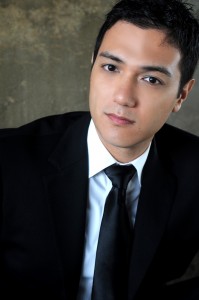 the program notes before the performance, trying to understand what exactly this Messiah-thing was. I was so young I don’t even remember precisely what year it was, but it was long before I ever considered becoming a singer. The reason I remember going was to see my violin teacher play in the Symphony. I had lots of questions: Did it tell a story? Why do we all stand up to sing along with that “Hallelujah” moment? What is an “Oratorio,” anyway? My inquisitive mind absorbed as much as it could before the first notes of the Overture. From that moment on, I was transfixed.
the program notes before the performance, trying to understand what exactly this Messiah-thing was. I was so young I don’t even remember precisely what year it was, but it was long before I ever considered becoming a singer. The reason I remember going was to see my violin teacher play in the Symphony. I had lots of questions: Did it tell a story? Why do we all stand up to sing along with that “Hallelujah” moment? What is an “Oratorio,” anyway? My inquisitive mind absorbed as much as it could before the first notes of the Overture. From that moment on, I was transfixed.
The first balcony of Hill was my favorite place to see concerts while I was growing up in Ann Arbor. It felt like the perfect distance from the stage—I wasn’t too far away to feel disconnected (not that distance matters in Hill—the sound actually gets better the higher up you sit), and I wasn’t too close, so I could see all of the action without missing a thing. It was from that first balcony that I caught a glimpse of how powerfully expressive music-making could be, watching Yo-Yo Ma play the Dvořák cello concerto with the Orchestra of St. Luke’s, getting my first taste of live great singing when Cecilia Bartoli offered a recital, and having my heart broken by Les Arts Florissants’ semi-staged performance of Acis and Galatea.
I cultivated my passion for classical music as an audience member in Hill, and it was on the stage that I cut my teeth as a young performing musician. It was in Hill, sitting in the back of the viola section of the Michigan Youth Symphony where I discovered what it was like to play in a large symphony orchestra. A year later, on a whim, as a sophomore in high school, I went to sing a last minute audition for Jerry Blackstone to try and get into the Michigan Youth Chamber Singers. Not having anything else to sing for him, I sang the national anthem. After I had finished, he said “sounds great!” and told me to go pick up some music for our first rehearsal that afternoon. A few months later, he would assign me my very own first, tiny oratorio solo to sing in Hill in Mozart’s Regina Coeli, and my journey as a singer had begun. I would spend the next seven years performing intermittently and even recording in Hill as a choral singer and soloist, honing my craft and gaining valuable experience that would set the foundation of what would turn out to be a life in music. To come back to Hill for such an important UMS tradition, standing on stage as a colleague with the people who started me on this life journey, marks not only a dream come true, but the ultimate homecoming.
—Nicholas Phan, tenor soloist, Ann Arbor native, and U-M School of Music, Theatre & Dance alumnus
UMS Arts Roundup: November 19
Many members of the UMS staff keep a watchful eye on local and national media for news about artists on our season, pressing arts issues, and more. Each week, we pull together a list of interesting stories and share them with you. Welcome to UMS’s Arts Round-up, a weekly collection of arts news, including national issues, artist updates, local shout-outs, and a link or two just for fun. If you come across something interesting in your own reading, please feel free to share!
Arts Issues
- What’s next on the list to download to your ipod? Ballet!
- The use of captions during plays give theaters access to new audiences, including the hearing impaired.
- 2011 Edinburgh International Festival to focus on Asian culture and influence.
Artist Updates
- World famous composer Philip Glass writes a new opera, to premiere in 2013.
- Alongside 14 others, Yo-Yo Ma is awarded the Presidential Medal of Freedom—the country’s highest civilian honor—from President Obama.
UMS News
- Annarbor.com performance review of Stew & the Negro Problem at the old Leopold’s pub. Additional performances on Friday and Saturday!
Local Shout-Outs
- Intriguing exhibit opens at DIA, looking at artist fakes and the detective work used to verify artworks.
- Students host EMU music festival featuring local bands.
Just For Fun
- Check out this circus-like version of “Swan Lake” that has lately been making the rounds on youtube. Amazing or horrifying? You decide!
UMS’s Arts Roundup: November 12
Many members of the UMS staff keep a watchful eye on local and national media for news about artists on our season, pressing arts issues, and more. Each week, we pull together a list of interesting stories and share them with you. Welcome to UMS’s Arts Round-up, a weekly collection of arts news, including national issues, artist updates, local shout-outs, and a link or two just for fun. If you come across something interesting in your own reading, please feel free to share!
Arts Issues
- No progress made with DSO talks, so musicians travel with self-produced concert series.
- Orchestras now join the HD-broadcast performing arts trend in an effort to entice new audiences.
- Fela! musical (which appears on UMS 10/11 NT Live series) faces $5M lawsuit.
Artist Updates
- Ann Arbor resident and American opera star, Shirley Verrett, passes away at 79.
- 2011 Musical America Honorees are announced, including distinguished violinist Anne Sophie-Mutter (who has previously appeared under UMS auspices).
UMS News
- AnnArbor.com review of the Tallis Scholars’ performance at St. Francis of Assisi.
- AnnArbor.com review of Vladimir Feltsman’s piano recital in Hill Auditorium Wednesday evening.
Local Shout-Outs
- U-M musical-theater alum, Darren Criss, makes his debut as a new character on the popular TV show Glee!
- Have ideas on who should perform at Ann Arbor Summer Festival’s Top of the Park this year? Submit your ideas and your wish could be granted!
Just For Fun
- Newest member of the band? Robot musician can jam and improvise with humans!
This Day in UMS History: Beverly Sills (September 23, 1977)
This Day in UMS History – September 23, 1977
Hill Auditorium
Beverly Sills, soprano
Charles Wadsworth, piano
Let the Bright Seraphim from Samson–Handel
Un moto di gioia, K. 579–Mozart
Bester Jüngling from Der Schauspieldirektor, K. 486–Mozart
Alleluia from Exsultate Jubilate, K. 165–Mozart
Many artists presented by UMS over its 132-year history have a long and rich history of performances with the organization. Soprano Beverly Sills was certainly no exception. Throughout the 1970s, Beverly Sills made numerous appearances under UMS auspices, culminating with this, her final appearance in 1977, just a few short years before announcing her retirement in 1980.
The late 60s and early to mid 70s were considered the high points of Beverly Sills’ career, as evidenced by her appearance on the cover of Time magazine in 1971, where she was described as “America’s Queen of Opera.” Beverly Sills’ first UMS appearance on January 30, 1971 was also a solo recital with Charles Wadsworth accompanying her on piano. On that particular program, Sills sang three arias from Handel’s opera seria Giulio Cesare. It is interesting to note that in 1966, Sills’ performance as Cleopatra in the New York City Opera’s revival of Handel’s then virtually unknown Giulio Cesare, is what many argue made her an international opera star.
Her final UMS program featured an aria from Handel’s oratorio Samson, considered by many to be one of Handel’s finest dramatic works, as well as three pieces by Mozart: concert aria “Un moto di gioia”, “Bester Jüngling” from the comic singspiel Der Schauspieldirektor (one of the only four vocal numbers in that piece), and “Alleluia” from the final allegro section of Mozart’s religious solo motet Exsultate Jubilate.
Following her retirement from performing, Beverly Sills remained quite active with the New York City Opera, serving on their board until 1991. Following that, she also served as chairman of Lincoln Center until 2002, and then as chairman of the Metropolitan Opera. Beverly Sills lost her battle with lung cancer on July 2, 2007 at the age of 78.
I hope you will take a moment to enjoy the video below and hear for yourself (if you weren’t able to attend any of her UMS performances!) the beauty and purity of tone of Beverly Sills’ voice as she sings one of my all-time favorite Mozart arias “Ruhe sanft, mein holdes Leben” from Zaide.
Rosanne Cash – What’s on your List?
I’m not the biggest country fan in the world, but when I learned of Rosanne Cash’s upcoming UMS concert, The List, I was set on attending. When Rosanne Cash was 18 her father gave her a list entitled “100 Essential Country Songs.” This list of essential songs is the inspiration for Rosanne’s UMS performance. Even if you aren’t well acquainted with the music performed this Saturday, this concert is sure to be revealing. Rosanne Cash will perform songs that showcase the weight music holds in shaping a person’s identity, or in her case, her identity as an artist.
I’m always amazed at music’s ability to evoke memories and their associated emotions, like how I’m transported to the warm, simplistic summers of my childhood whenever I listen to Motown, or how I tear up with sympathy at every listening of “And I Am Telling You I’m Not Going.” I marvel at how we parallel our own experiences to themes expressed through music and are comforted by these associations. I love that these songs, their stories, remain embedded in my identity, accompanying me forever like a personal soundtrack of my life.
I can’t wait to see which songs Rosanne will choose to share with us on Saturday during The List. Her selections will certainly be memorable, partly as a tribute to her musical roots and partly as a narrative to her own unique history. I look forward to a glimpse of the world through her lyrical inspirations and perspective.
Inspired by The List performance, we at UMS want to know what’s on your list. I hope you will share your “essentials” with us! Don’t forget to include why these songs/pieces of music have made it on your list — feel free to include them in the comments below or to tweet them using the hash tag #umslobby. Who knows, maybe I’ll add them to mine.
See you Saturday at the show!
P.S. Be sure to check out The Local “Lists” Show on Thursday, September 23, at 9 pm at the Yellow Barn, 416 W Huron St, Ann Arbor, for an evening of local musicians performing songs from their lists of essential and influential music, inspired by Rosanne Cash’s The List concert.
Additional UMS 10/11 Events
UMS is pleased to announce additional concerts in the 10/11 season that are not part of our genre-specific packages. These events are all part of UMS’s popular Monogram Series, which allows audience members to select at least five events and receive a 10% discount.
Rosanne Cash: The List
Saturday, September 25 | 8 pm
Hill Auditorium
When Roseanne Cash was 18 and on the road with her father, the incomparable country music superstar Johnny Cash, he became alarmed at the number of songs that she didn’t know. As the tour progressed, he developed a list on a legal pad — “100 Essential Country Songs” — and gave it to her with a thinly veiled admonishment that she needed to do her homework. Now, more than 30 years later, Cash has selected a dozen songs from the syllabus presented to her by her father and has recorded her first album of covers, filtered through her own unique, sophisticated perspective. The List presents Roseanne Cash like you’ve never heard her before, as she embraces her heritage and sings for the pure love of these songs that have shaped who she is as an artist.
Mariachi Vargas de Tecalitlán
Saturday, November 6 | 8 pm
Hill Auditorium
With a history that dates back to the late 1890s, the Mariachi Vargas de Tecalitlán was founded in a small city near Jalisco by Don Gaspar Vargas. This band basically invented the modern mariachi, and five generations later, are still playing today. The group spent its formative years defining their sound and experimenting with different instrumental lineups. Today the group is comprised of two harps, one vihuela, one guitar, one guitarron, two trumpets, and six violins. The songs they sing cross over from one generation to the next, making their performances appealing to both young and mature audiences. Recognized as “el major mariachi del mundo” (the greatest mariachi in the world), Mariachi Vargas are the masters at melding the old world style of mariachi music with new innovative pieces.
Stew and The Negro Problem
with Heidi Rodewald
Thursday, November 18 | 8 pm
Friday, November 19 | 8 pm
Saturday, November 20 | 7:30 pm & 10:30 pm
Location TBA
“Stew’s endlessly inventive music draws on rock, gospel, soul, and blues…A winning tribute to the diversity of the black musical experience.” (Hollywood Reporter) Songwriter Stew’s career took an unexpected turn in 2006. After a successful career fronting his critically acclaimed bands, Stew and The Negro Problem, he transformed his life story into the rock musical Passing Strange. The show, co-composed with Heidi Rodewald, earned him the 2008 Tony Award for “Best Book of a Musical” and attracted the attention of Spike Lee, who produced the film, which premiered at the 2009 Sundance Film Festival and airs on PBS’s “Great Performances.” Compared in the same breath with Kurt Weill, Burt Bacharach, and Jackie Gleason, Stew’s concert performances are coveted for their literate precision, sly humor, and deep emotional resonance, hovering between the divergent worlds of rock and theater. “Something hipper for the hipper…Stew is a very genial and lovable guide through the common travails of life. Like a lot of fine writers and musicians, he has the ability to layer reflexive self-doubt into his music and lyrics…very witty, very smart.” (Chicago Tribune)
Carolina Chocolate Drops
Friday, December 3 | 8 pm
Michigan Theater
“Tradition is a guide, not a jailer. We play in an older tradition but we are modern musicians,” says Justin Robinson, a member of the popular bluegrass band, the Carolina Chocolate Drops. The group’s name is a tip of the hat to the Tennessee Chocolate Drops, who lit up the music scene in the 1930s. Inspired by old-time fiddler Joe Thompson, at whose home they jammed every Thursday night during the summer and fall of 2005, the CCD starting playing anywhere people would listen — town squares, farmers’ markets, and ultimately festivals and concert halls, where their foot-tapping music linked the deep tradition of the past with “dirt-floor-dance electricity.” (Rolling Stone) Their sellout shows at the Ark last year reinforced how far they’ve come in a very short time. “This striking North Carolina trio brings a modern sizzle to the legacy of classic African American stringbands…sparking an electrifying ruckus.” (Spin)
Handel’s Messiah
Ann Arbor Symphony Orchestra and UMS Choral Union
Jerry Blackstone conductor
Saturday, December 4 | 8 pm
Sunday, December 5 | 2 pm
Hill Auditorium
The Grammy Award-winning UMS Choral Union (2006 Best Choral Performance for William Bolcom’s Songs of Innocence and of Experience) launches the holiday season with its signature work, Handel’s glorious oratorio Messiah. An Ann Arbor tradition in the beautiful surroundings of Hill Auditorium, these performances are ultimately the heart and soul of UMS, connecting audiences with the talented people on stage, but also with the friends and family who attend each year. Those who have been coming for decades say that the chorus has never sounded better.
Joanne Shenandoah
Sunday, January 23 | 4 pm
Rackham Auditorium
One of today’s most revered Native American singers and songwriters, Joanne Shenandoah is a Wolf Clan member of the Iroqois Confederacy, Oneida Nation whose Native name, Deguiya whah-wa, means “she sings.” The singer/songwriter has performed with such legendary entertainers as Kris Kristofferson and Willie Nelson and has won more Native American Music Awards (Nammies) than any other artist. The daughter of two talented musicians (her father, a jazz guitarist, played with Duke Ellington), Shenandoah was an architectural systems engineer before forging her successful career as a musician. “From my office window I saw a tree being cut down and knew that I, too, had been uprooted and needed to follow my natural gift,” she says. Shenandoah’s original compositions, combined with a striking voice, enable her to embellish the ancient songs of the Iroquois using a blend of traditional and contemporary instrumentation.
Blues at the Crossroads: The Robert Johnson Centennial Concert
featuring Big Head Todd & The Monsters
David “Honeyboy” Edwards
Hubert Sumlin
Cedric Burnside
and Lightnin’ Malcolm
Thursday, February 10 | 8 pm
Hill Auditorium
Straight from the heart of the back country, Blues at the Crossroads has a direct connection back to Robert Johnson (1911-1938), among the most famous of Delta blues musicians. Johnson’s landmark recordings in the 1930s displayed a remarkable combination of singing, miraculous guitar skills, and songwriting talent that have influenced generations of musicians, including Eric Clapton, who called him “the most important blues singer that ever lived.” This concert picks up the thread of Johnson’s legacy in Mississippi at the junction of US Highways 61 and 49, the very crossroads where, as legend has it, Robert Johnson made a deal with the devil, giving up his soul to write the most incredible blues the world had ever heard. The concert features Big Head Todd & The Monsters, as well as David “Honeyboy” Edwards, who at 94 is the only living person to have played with Robert Johnson before his untimely death at age 27 — believed to have been caused by poisoning from a bottle of whiskey that was laced with strychnine.
Kodo Drummers
Wednesday, February 23 | 8 pm
Hill Auditorium
In ancient Japan, the taiko drum was a symbol of the rural community, and it is said that the limits of the village were defined not by geography, but by the furthest distance from which the taiko could be heard. With its “One Earth” tour, Kodo brings the sound of the taiko to people around the globe, transcending barriers of language and custom and reminding all of our membership in that much larger community, the world. “In this age of exploding populations and lightning-fast communication, it is more important than ever that these diverse cultures learn to recognize and accept each other so that all may share our increasingly shrinking planet in harmony,” according to Kodo’s primary philosophy. The Japanese characters of the company’s name convey two meanings: “heartbeat,” the primal source of all rhythm, and “children of the drum,” a reflection of Kodo’s desire to play their drums simply, with the heart of a child.
Tony Allen’s Secret Agent
Saturday, April 16 | 8 pm
Hill Auditorium
The drummer behind the late Nigerian bandleader Fela Anikulapo Kuti, Tony Allen is probably the most highly-regarded African drum set player to emerge since World War II, with drummers and other musicians of all backgrounds marveling at his polyrhythmic style. Kuti is largely considered the most influential African popular musician of the post-colonial era, and Tony Allen was his crucial collaborator in the synthesis of jazz, funk, and highlife that resulted in the style known as Afrobeat.Born in Nigeria in 1940 of mixed Nigerian and Ghanaian parentage, Allen is influenced by everything from European ballroom dance music to big-band jazz drumming, indigenous percussion traditions, and the tradition of modern jazz drumming typified by such musicians as Art Blakey, Elvin Jones, and Max Roach. After playing for years in the shadows of better-known musicians, Tony Allen is now starting to receive the worldwide credit he deserves as one of the most dynamic players of the drum set. “Without Tony, there’d be no Afrobeat.” (Fela Anikulapo Kuti)
Other events on the Monogram Series:
Paul Taylor Dance Company
Sankai Juku: Hibiki
Grupo Corpo
Merce Cunningham Dance Company
The Hot Club of San Francisco and the Hot Club of Detroit/Django Reinhardt 100th Birthday Celebration
Wynton Marsalis and Jazz at Lincoln Center Orchestra
Vijay Iyer Trio and Rudresh Mahanthappa’s Apex
Septeto Nacional Ignacio Piñeiro de Cuba
Susurrus
Laurie Anderson’s Delusion
Druid Theater Company: Martin McDonagh’s The Cripple of Inishmaan
Propeller Theater Company: Shakespeare’s Richard III and The Comedy of Errors
Divine Voices (St. Francis of Assisi Catholic Church)
Jordi Savall and La Capella Reial de Catalunya with Hesperion XXI and Temembe Ensamble
The Tallis Scholars
Sequentia
Jerusalem String Quartet
Nadja Salerno-Sonnenberg and New Century Chamber Orchestra
Concertante and Rafał Blechacz, piano
Takács Quartet: Schubert Concert 2
Takács Quartet: Schubert Concert 3
Tetzlaff Quartet
Venice Baroque Orchestra
The Cleveland Orchestra
Rafał Blechacz, piano
Detroit Symphony Orchestra/Mahler’s Symphony No. 8
Bach Collegium Japan/Bach’s Mass in b minor
Liebeslieder Waltzes
******************************************
GLOBAL FOCUS ON THE AMERICAS
******************************************
This season’s global series explores The Americas — North, South, and Latin — with 19 different events representing something uniquely different about this part of the world. The events featured on The Americas series are:
Roseanne Cash (Sat Sep 25)
Tembembe Ensamble Continuo/The Route of the New World: From Spain to Mexico (Thu Sep 30)
Paul Taylor Dance Company (Thu-Sat Oct 7-9)
Venice Baroque Orchestra/Philip Glass’s “American Four Seasons” (Wed Oct 27)
ONCE.MORE Festival: The Historic Concert (Tue Nov 2)
Mariachi Vargas de Tecalitlán (Sat Nov 6)
Stew and The Negro Problem with Heidi Rodewald (Thu-Sat Nov 18-20)
Carolina Chocolate Drops (Fri Dec 3)
Laurie Anderson’s Delusion (Fri-Sat Jan 14-15)
Renée Fleming soprano (Sun Jan 16)
Grupo Corpo (Fri-Sat Jan 21-22)
Joanne Shenandoah (Sun Jan 23)
Baby Loves Salsa (family performances) (Sun Jan 30)
The Cleveland Orchestra (Tue Feb 1)
Wynton Marsalis and Jazz at Lincoln Center Orchestra (Wed Feb 2)
New Century Chamber Orchestra/Astor Piazzolla’s “Four Seasons of Buenos Aires” (Fri Feb 4)
Blues at the Crossroads: The Robert Johnson Centennial (Thu Feb 10)
Vijay Iyer Trio and Rudresh Mahanthappa’s Apex (Sat Feb 12)
Merce Cunningham Dance Company: The Legacy Project (Fri-Sat Feb 18-19)
Detroit Symphony Orchestra (Sat Mar 19)
Septeto Nacional Ignacio Piñeiro de Cuba (Thu Apr 7)
Tickets to individual events on the series go on sale on Monday, August 23 (via www.ums.org) and Wednesday, August 25 (in person and by phone).
Which events in the season are you most anticipating? Tell us what your monogram series is likely to include!
UMS Announces 10/11 Choral Union Series & Piano Series
The University Musical Society is pleased to announce its 132nd Annual Choral Union Series, with 10 concerts in Hill Auditorium. The series includes:
Mariinsky Orchestra
Valery Gergiev, conductor
Denis Matsuev, piano
Sunday, October 10 | 4 pm
Hill Auditorium
Gergiev’s long association with the Mariinsky Theatre — including 10 UMS appearances, most recently the five-concert cycle of Shostakovich symphonies —has raised the ensemble’s profile to the point where it is now widely regarded one of the most dynamic and exciting ensembles on the world stage today. The fiery Russian pianist Denis Matsuev has received worldwide acclaim for his rare combination of technical virtuosity and deep musicality since his stunning victory at the 11th International Tchaikovsky Competition in Moscow in 1998. “His technique is phenomenal: blistering passagework, steely chords. Perhaps he is the new Horowitz.” (London Times)
Program
Rachmaninoff Piano Concerto No. 3 in d minor, Op. 30
Mahler Symphony No. 5
Venice Baroque Orchestra
Robert McDuffie, violin
Wednesday, October 27 | 8 pm
Hill Auditorium
The Venice Baroque Orchestra was founded in 1997 by harpsichordist Andrea Marcon and is recognized as one of Europe’s premier ensembles devoted to period instrument performance. For this UMS debut, they perform music of their home city — Venetian composer Antonio Vivaldi’s The Four Seasons — paired with an “American Four Seasons” by Philip Glass featuring violinist Robert McDuffie, who has worked closely with Glass over the years and who made his UMS debut with the Jerusalem Symphony in 2008.
Program
Vivaldi The Four Seasons, Op. 8 (1723)
Glass Violin Concerto No. 2: “The American Four Seasons”
Murray Perahia, piano
Wednesday, November 10 | 8 pm
Hill Auditorium
Anyone who has heard one of Murray’s Perahia’s previous 11 UMS appearances would have to agree with the assessment of The Los Angeles Times: “Perahia is a marvel.” In the more than 35 years he has been performing on the concert stage, he has become one of the most cherished pianists of our time. “Perahia may be the closest thing to a pure conduit of music — one in which the imagination and skill of the player are entirely at the service of the composer, not the player’s ego…The soul of a poet, the mind of a thinker, the hands of a virtuoso: No wonder audiences love this guy.” (The Seattle Times)
Program to be announced.
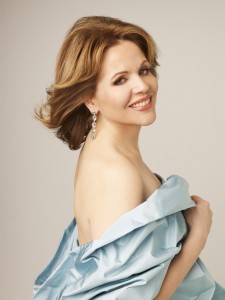 Renée Fleming, soprano
Renée Fleming, soprano
Sunday, January 16 | 4 pm
Hill Auditorium
One of the most beloved and celebrated musical ambassadors of our time, soprano Renée Fleming captivates audiences with her sumptuous voice, consummate artistry, and compelling stage presence. In addition to commanding the stages of the great opera houses of the world, she hosts the Metropolitan Opera’s Live in HD Series for movie theaters and television with behind-the-scenes interviews. Her fame is such that perfumes, desserts, and flowers have all been named after her, but those superficial accolades pale in comparison to her devoted following of opera lovers around the world. This great American soprano returns to UMS after her 1997 recital and her 2005 appearance in a concert version of Richard Strauss’s Daphne.
The Cleveland Orchestra
Franz Welser-Möst, conductor
Pierre-Laurent Aimard, piano
Tuesday, February 1 | 8 pm
Hill Auditorium
Founded shortly after the end of World War I, the Cleveland Orchestra has been guided by seven music directors, each of whom has left his mark on the widely admired “Cleveland” sound: Nikolai Sokoloff, Artur Rodzinski, Erich Leinsdorf, George Szell, Lorin Maazel, Christoph von Dohnányi, and Franz Welser-Möst, who leads the ensemble and the French pianist Pierre-Laurent Aimard in this performance.
Program
Bartók Music for Strings, Percussion, and Celeste, Sz. 106, BB 114
Schumann Piano Concerto in a minor, Op. 54
Wagner Overture to Tannhäuser
Rafał Blechacz, piano
Friday, February 11 | 8 pm
Hill Auditorium
In October 2005, the 20-year-old Rafał Blechacz, an unassuming young man from a small town in northern Poland, arrived in Warsaw for the 15th International Chopin Competition. His sensational performance won not only the competition, but also all four special prizes for the polonaise, mazurka, sonata, and concerto performance — in fact, one of the judges remarked that he “so outclassed the remaining finalists that no second prize could actually be awarded.” Blechacz was the first Pole to win the prize since Krystian Zimerman 30 years earlier. Notwithstanding his young age, his playing offers poetry, maturity, poise and concentration, as well as a phenomenal and luminous technique. “How reassuring it is to see one so young putting poetry first…we were all on another planet.” (Financial Times)
Program to be announced.
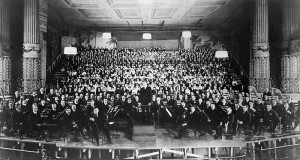 Mahler’s Symphony No. 8
Mahler’s Symphony No. 8
Detroit Symphony Orchestra
UMS Choral Union
U-M Chamber Choir
U-M University Choir
U-M Orpheus Singers
MSU Children’s Choir
Leonard Slatkin, conductor
Saturday, March 19 | 8 pm
Hill Auditorium
In commemoration of the 150th anniversary of Gustav Mahler’s birth and the 100th anniversary of his death, UMS is collaborating with the DSO and Michigan Opera Theatre to present a spectacular, not-to-be-missed performance of Mahler’s monumental Symphony No. 8, also known as “Symphony of a Thousand.” The first performance of this “choral symphony” featured a chorus of about 850, with an orchestra of 171, leading Mahler’s agent to dub to the work “Symphony of a Thousand.” While Mahler himself did not approve of the title, it nevertheless remains associated with this work, which is rarely preformed due to the massive forces required to do it justice.
Bach’s Mass in b minor
Bach Collegium Japan
Masaaki Suzuki, conductor
Thursday, March 24 | 8 pm
Hill Auditorium
Founded in 1990 by Masaaki Suzuki with the aim of introducing Japanese audiences to period instrument performance of great works of the Baroque period, the Bach Collegium Japan comprises both orchestra and chorus. The group has developed a formidable reputation through its recordings of J.S. Bach’s church cantatas, and returns to Ann Arbor after its 2003 St. Matthew Passion in St. Francis of Assisi Catholic Church. Widely regarded as one of the supreme achievements in classical music, the Mass in b minor was composed over a period of 25 years and assembled in its present form in 1749, the year before Bach died. “I have never heard period instruments played with such purity of tone, so reliably in tune. The small, precise, dramatically alert chorus breathed fire but also revealed a heartbreaking tenderness.” (The Los Angeles Times)
St. Petersburg Philharmonic
Yuri Temirkanov, conductor
Nikolai Lugansky, piano
Saturday, April 2 | 8 pm
Hill Auditorium
The Russian city of St. Petersburg boasts two world-class orchestras, and UMS has enjoyed a long relationship with each. The St. Petersburg Philharmonic has appeared in Ann Arbor five times under Yuri Temirkanov’s leadership. With a history dating back more than 200 years, the St. Petersburg Philharmonic is embedded with musical history, performing the world premiere of Beethoven’s Missa Solemnis in 1824, as well as Tchaikovsky’s Symphony No. 6, Prokofiev’s Symphony No. 1, and many works by Shostakovich. Pianist Nikolai Lugansky, who won the 1994 Tchaikovsky Piano Competition, makes his UMS debut. A Russian newspaper said of his performance in the final round of competition: “It was like getting sunstroke, a musical shock. Nobody could imagine that the soul of this unpretentious, modest young man, with his ascetic, but also poetic appearance, held such a volcano inside with inspired and resolute control.”
Program
Rimsky-Korsakov Scheherazade, Op. 35
Rachmaninoff Piano Concerto No. 2 in c minor, Op. 18
Liebeslieder Waltzes
Genia Kühmeier, soprano
Bernarda Fink, mezzo-soprano
Michael Schade, tenor
Thomas Quasthoff, bass-baritone
Malcolm Martineau, piano
Justus Zeyen, piano
Saturday, April 23 | 8 pm
Hill Auditorium
After nearly a decade in which he composed no vocal music at all, Schumann made a striking return to the genre with the Spanisches Liebeslieder song collection, which combines songs for solo voice with duets and quartets. A generation later, Brahms took the same instrumentation — vocal quartet plus four-hand piano —and composed the Liebeslieder and Neue Liebeslieder Waltzes. These three works serve the centerpiece of a program that also includes Brahms’ composition for vocal quartet and piano, performed by a brilliant quartet of musicians, including bass-baritone Thomas Quasthoff, who last appeared at UMS in a Lydia Mendessohn Theatre recital in 2000.
Program
Schumann Spanische Liebeslieder, Op. 138
Brahms Liebeslieder Waltzes, Op. 52
Brahms Four Songs from Quartets for Four Voices and Pianos, Ops. 64 & 92
Brahms Neue Liebeslieder Waltzes, Op. 65
Tickets for the 10-concert series range from $100-$650. Subscription renewal packets and brochures will be mailed in early May.
In addition to the 10-concert Choral Union Series, five events listed above will be packaged as a Piano Series (Kirov Orchestra with Denis Matsuev, Murray Perahia, Cleveland Orchestra with Pierre-Laurent Aimard, Rafał Blechacz, and St. Petersburg Philharmonic with Nikolai Lugansky). Prices for the five-concert Piano Series range from $50-$310.
Tickets to individual events on the series go on sale on Monday, August 23 (via www.ums.org) and Wednesday, August 25 (in person and by phone).
Which events in the season are you most anticipating? Let us know in the comments area below.
Spotlight on Sara Sanders
If you’ve attended a performance presented by UMS in the last three seasons, you may have seen Sara Sanders in the lobby. As UMS’s Front-of-House Coordinator, Sara manages everything that happens “in the house” and off the stage from the auditorium to the lobby and beyond. Sara recruits and trains the UMS Usher Corps, handles patrons’ issues, and generally tries to make sure everyone is happy and having a great experience when they attend a UMS performance.
Outside of the performance venues, Sara is pursuing a Masters degree in Public Administration, with a focus on non-profit organizations, at Eastern Michigan University.
Recently I sat down with Sara and asked her a few questions to help us all get to know her better.
JN: What is your performing arts/musical background?
SS: I was in Footloose at Fowlerville High. I also tried violin and piano.
JN: What do you want to be when you grow up?
SS: Ken Fischer! No, really, I’d like to work in non-profit arts administration. Ideally, I’d like to work with an under-served population.
JN: What is your biggest challenge as a front-of-house coordinator?
SS: Balancing everyone’s needs . . . the ushers, the patrons, the staff, the artists.
JN: If there was one thought you’d like to convey to UMS audience members, what would it be?
SS: Please be on time for performances.
JN: What audience behaviors elicit the most complaints?
SS: I hear a lot of complaints about the use of cameras and cell phones during performances. People also talk to me about other patrons coughing. We provide cough drops to help with that problem.
JN: What is the time commitment for a UMS usher?
SS: Full-time ushers can work up to 50 hours in a season at Hill Auditorium. The time commitment for people who work on multiple crews can be twice or three times as many hours, when including some of our other venues. We couldn’t operate without our volunteers, and we very much appreciate all they do for us.
JN: What changes have you seen in audiences over the three years you’ve been in your job?
SS: It’s not a culture change, but it seems like people have more interest in UMS and have more knowledge of the organization. I’ve also seen a lot more students in the audience than before.
JN: What was your favorite UMS performance so far?
SS: Without a doubt, it was Complicite’s A Disappearing Number.
JN: Describe a perfect day.
SS: Lots of sunshine; warm, but not too warm; being out and about in Ypsilanti (I’m having a love affair with Ypsilanti).
JN: What’s your favorite meal?
SS: Breakfast, if it’s done right.
Chicago Symphony Orchestra & UMS: The Ultimate Long-Term Relationship
Editor’s note: Chicago Symphony Orchestra returns to Ann Arbor on October 29, 2015.
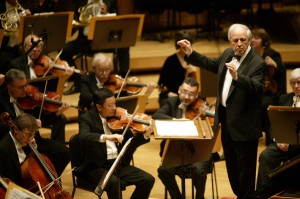
Pierre Boulez conducting the CSO (photo: Todd Rosenberg)
The Chicago Symphony Orchestra’s January 27, 2010 appearance in Hill Auditorium is the 202nd in a series of performances under UMS auspices that began over a century ago, on November 21, 1892. The orchestra, then known as the “Chicago Orchestra” was conducted by Theodore Thomas in typically eclectic (for its time) program of Weber (Overture to “Freyschuetz”), Beethoven (Allegretto from the Seventh Symphony), Tchaikovsky (Suite from Ballet, Casse Noisette – billed as a “new” work, as indeed it was for its time), and Wagner (Vorspiel from Meistersinger).
The CSO’s complete UMS performances are too numerous to mention even in the scantiest detail, but there are several concerts which caught my eye as I was browsing UMS’ archives.
In UMS’ May Festival of 1931, the CSO was the resident orchestra in several concerts. One of those concerts featured an oratorio by French composer Gabriel Pierné on the life of St. Francis of Assisi – with such vocal roles as “The Leper” and “The Voice of Christ” (both sung by the same person), “The Lady Poverty”, and “Birds” (sung by a children’s chorus). Another concert featured legendary Polish pianist Ignace Paderewski, performing his own piano concerto and solo piano works by Chopin.

Arthur Grumiaux
There is an interesting anachronism in the program for the CSO’s March 1952 performance with the great violinist Arthur Grumiaux. Grumiaux is listed as playing Bartók’s “Concerto for Violin and Orchestra,” as though he had only written one violin concerto. Bartók in fact wrote two violin concerti, but the first, although written in 1907-08 (for a woman he was in love with, but who rejected him), was not published until 1958, after Bartók’s death (and after this performance of the second concerto with Grumiaux and the CSO).
The CSO has a long history with the works of Richard Strauss, having given the U.S. premieres of most of the great tone poems, including Till Eulenspiegel and Ein Heldenleben. Strauss was also the CSO’s first guest conductor, in 1904; after the first rehearsal with the CSO, he said to the orchestra, “I am delighted to know you as an orchestra of artists in whom beauty of tone, technical perfection, and discipline are found in the highest degree.” The CSO brought that tradition to Ann Arbor in March 1992 with a performance of Strauss’s Don Juan, Till Eulenspiegel, and Ein Heldenleben, conducted by Daniel Barenboim.
The CSO’s most recent UMS performance was in December 2005 with guest conductor Robert Spano and the Marcus Roberts Trio, performing Ralph Vaughn Williams’ Symphony #2, George Gershwin’s Rhapsody in Blue, and Leonard Bernstein’s Symphonic Dances from West Side Story.
Seven Doors of UMS and the Chicago Symphony
On Wednesday, January 27, Pierre Boulez will conduct the Chicago Symphony Orchestra in Bartók’s Bluebeard’s Castle. The one-act opera tells the story of the lovely Judith, who has just eloped with her new husband, Bluebeard. They arrive at his castle, and Bluebeard tells Judith that the seven locked doors in his castle are private places not to be explored. Judith eventually convinces him to reconsider, and the seven doors are opened, revealing something horrible and terrifying behind each.
We thought we’d have some fun with the “seven doors,” so we’ve found seven doors in Ann Arbor that relate in some way to UMS or Chicago. We won’t insist that terror lurks behind these doors…in fact, if you can identify all seven, you’ll be entered to win a terrific package that includes swag from both UMS and the Chicago Symphony.
Contest ends on Monday, January 25 at 6 pm. To enter, identify each door and send your name and address to 7doors@umich.edu or fax to 734-998-7526. One entry per person, please. Winner(s) will be selected and notified on Tuesday, January 26 via email.


